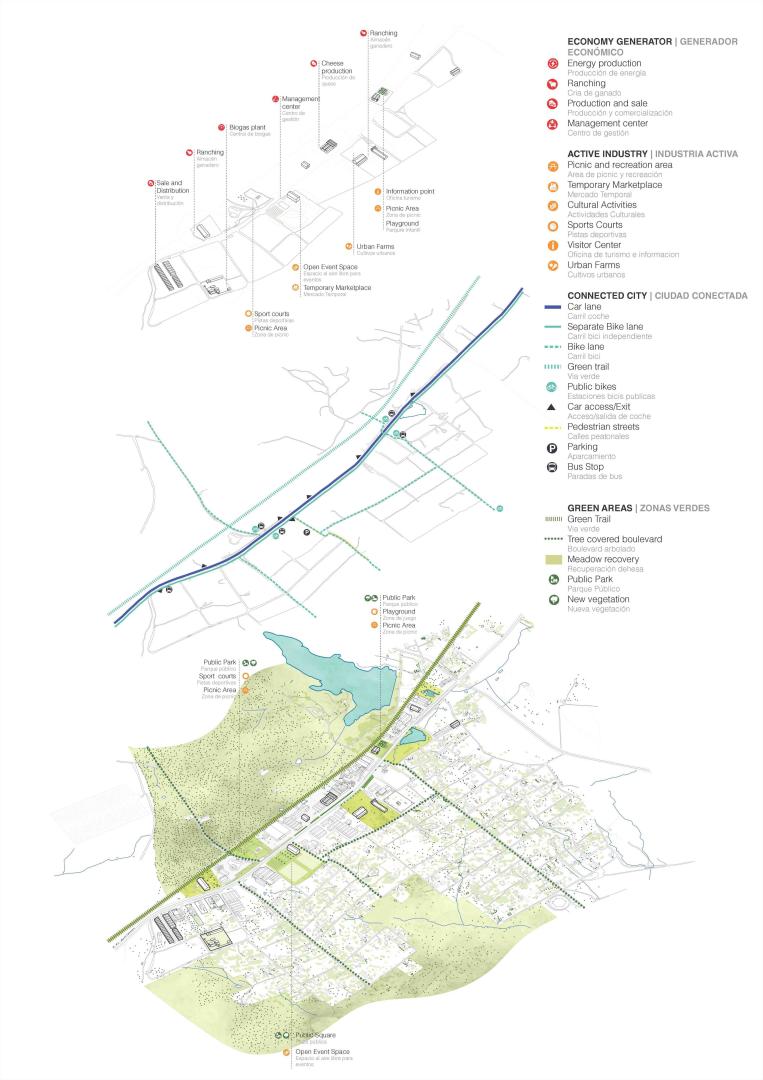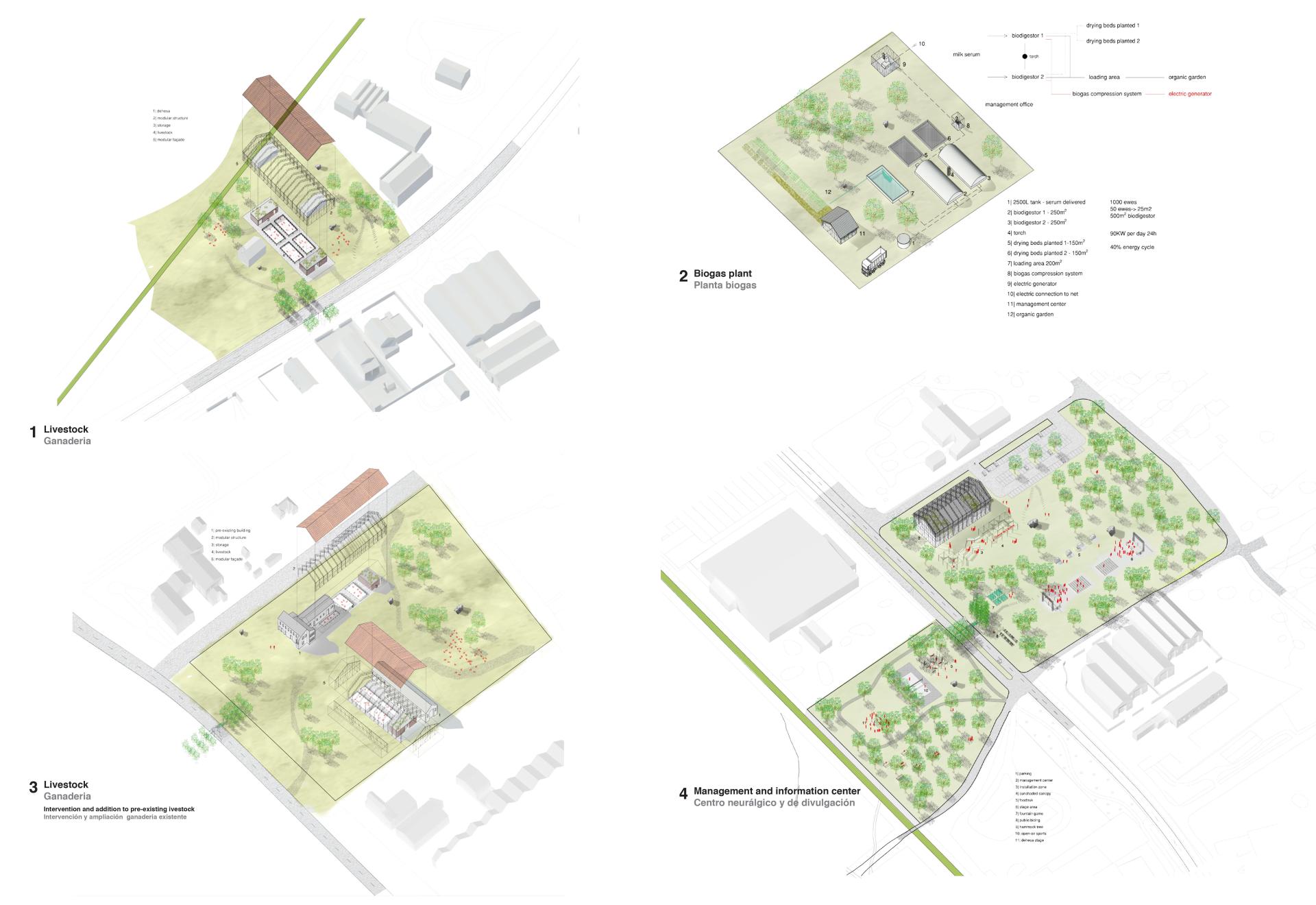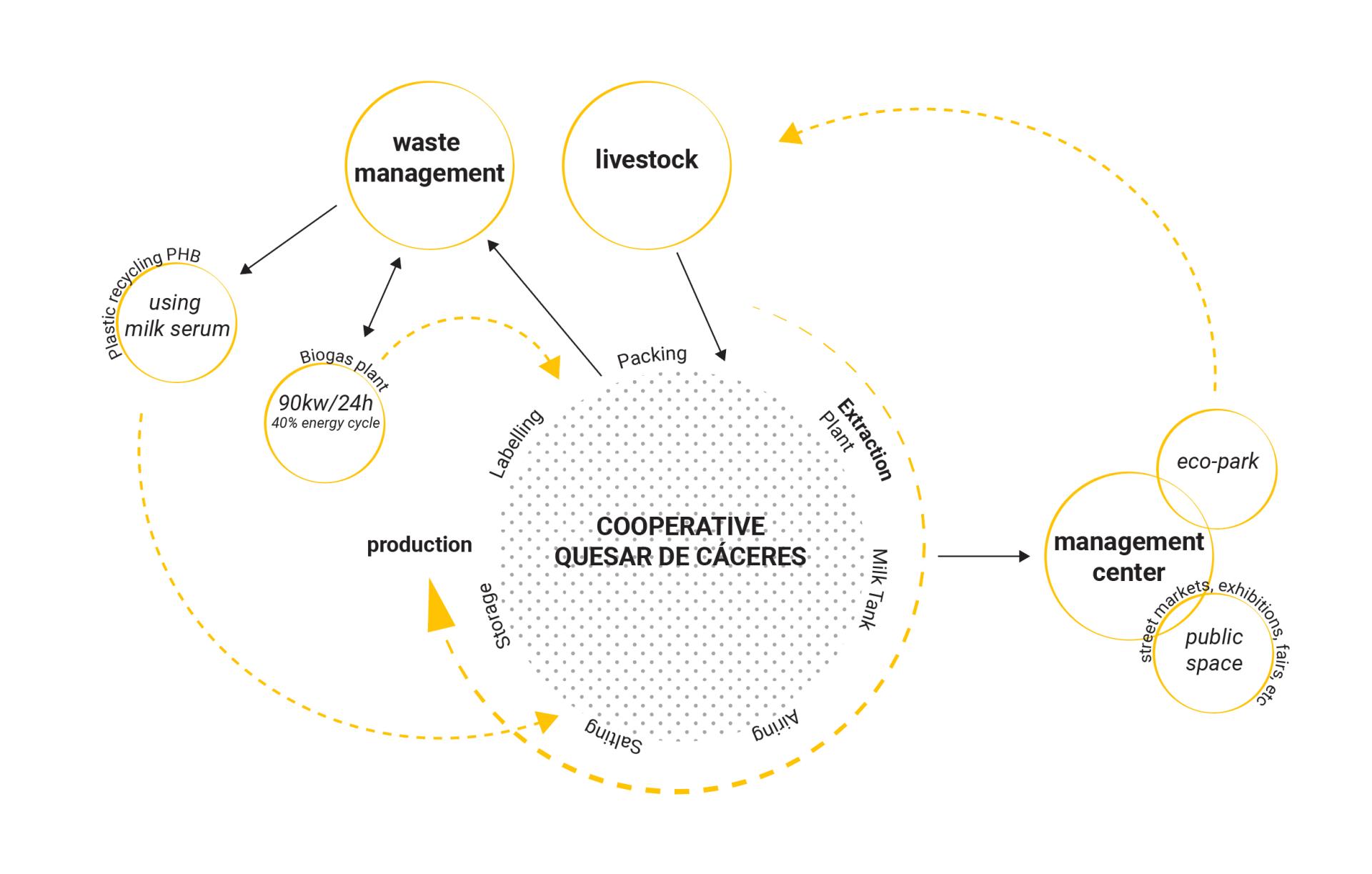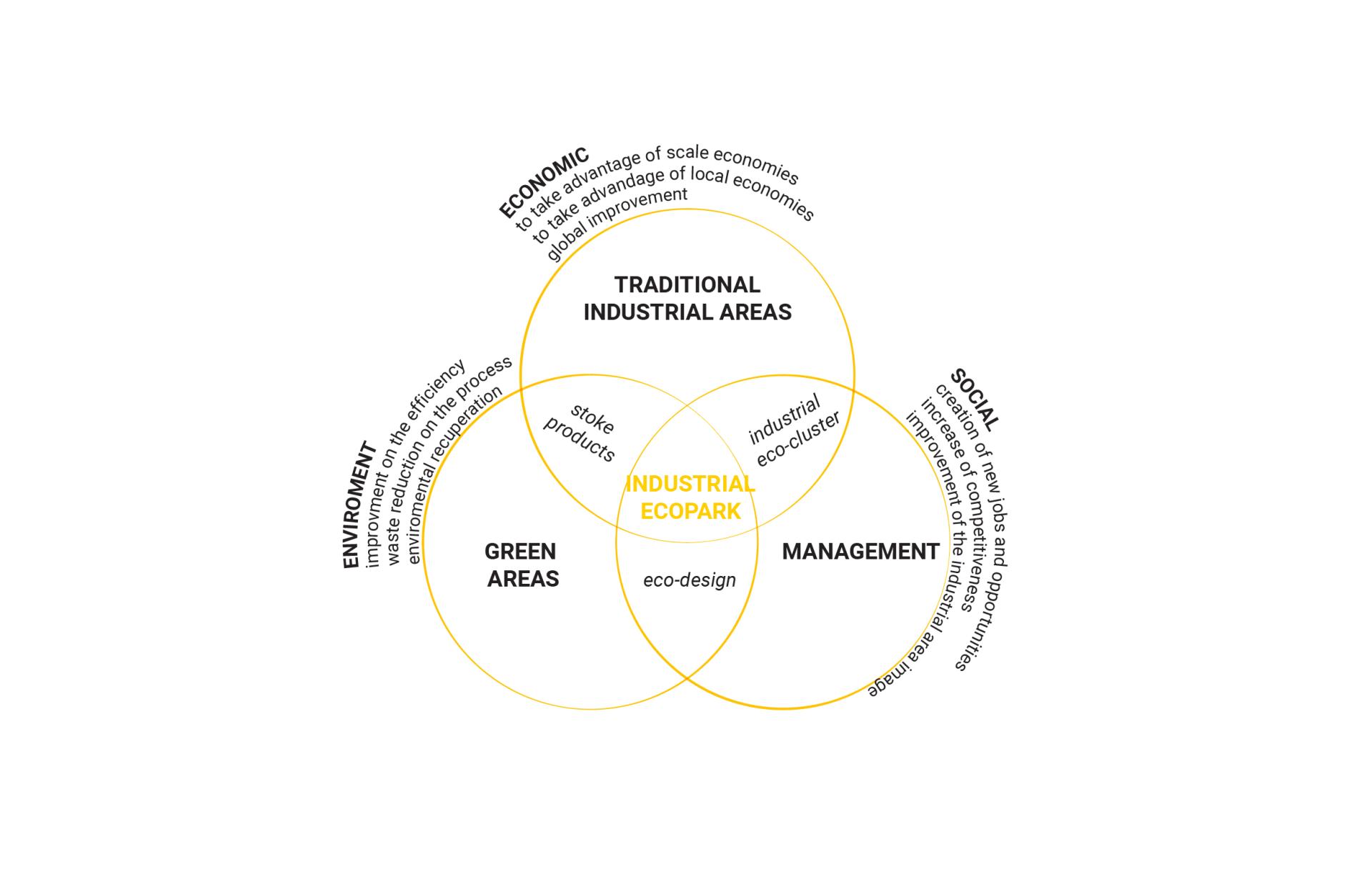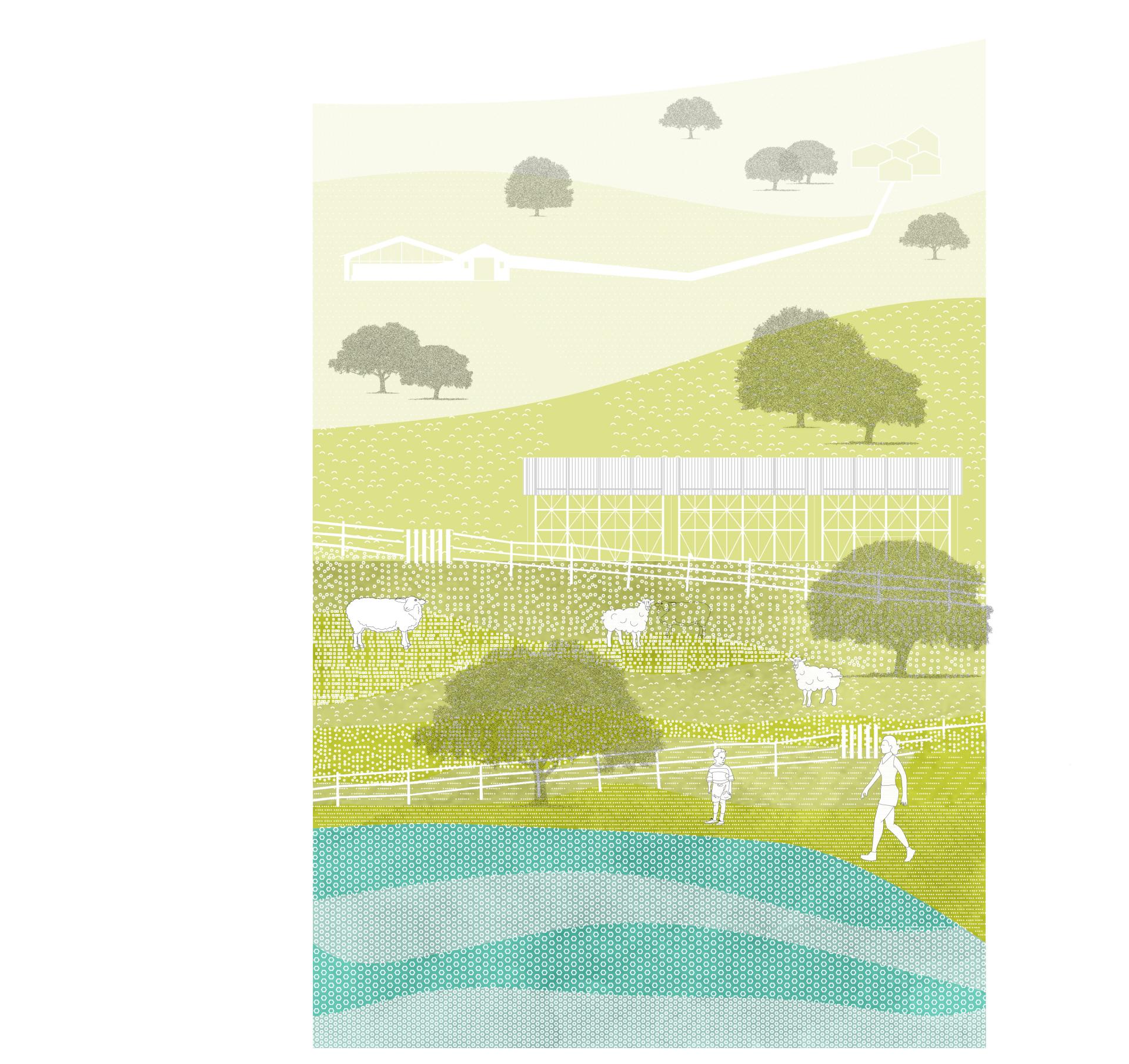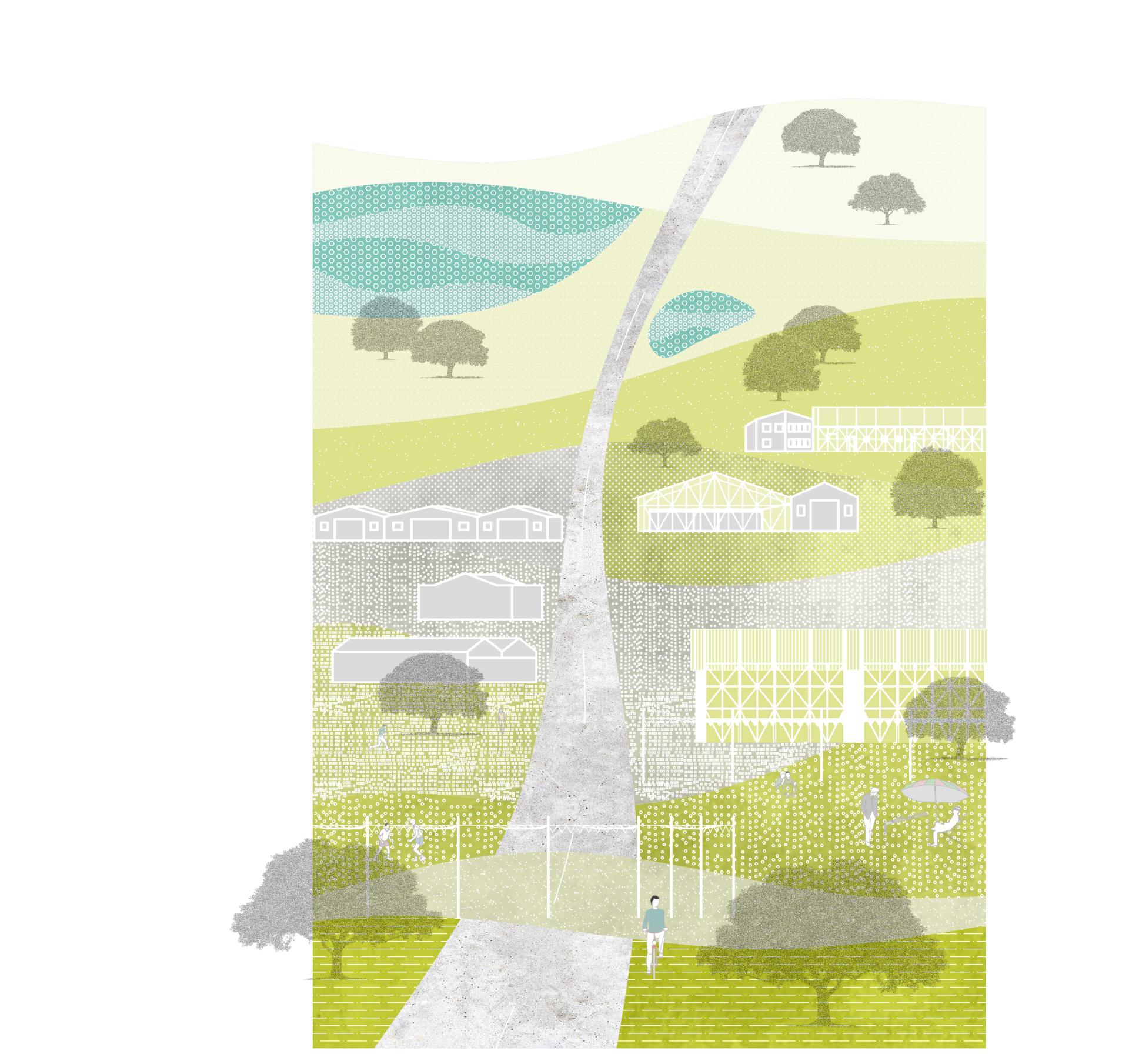Quesar de Caceres
Basic information
Project Title
Full project title
Category
Project Description
Quesar de Cáceres proposes a new type of urban production implementing an alternative model of territory and community based on the concept of the Cooperative, where economic producers from the same industry join their resources for the benefit of their community growth. The model shares an infrastructure that serves as a bridge to grow capital and reinvestment for the repositioning of their industries, community, and territory to address issues of the future in the era of the Anthropocene.
Geographical Scope
Project Region
Urban or rural issues
Physical or other transformations
EU Programme or fund
Which funds
Description of the project
Summary
Quesar de Cáceres is an industrial and social eco-model based on a cooperative scheme for the manufacturing of a traditional local product. It incorporates sustainability criteria into the process, reusing existing infrastructure, optimising industrial and economic waste, generating new quantitative jobs, and improving the image of the city. This model is an essential tool in reinvigorating rural areas that increasingly suffer from depopulation. The model can be implemented in phases, be adaptable to a variety of programs and types of industry, and become suitable for implementation in other territories and industries.
The main objective of the proposal is the development and implementation of a new sustainable production model that will enhance the value of existing systems, contribute to local progress, help stabilise the population and satisfy new demands that are generated with the associated growth. Following the foundations of the traditional economy of the region, stockbreeding and cheese production, a circular cooperative model is proposed where the small producers, as well as new companies in the area, find the necessary infrastructure to develop their activity. Technological innovation is incorporated to optimise the process, promoting the prosperity of the industry without compromising our sustainability goals.
For this model to thrive, a reconciliation with the surroundings is required. The proposal seeks restoration and adaptation to the native landscape, as well as a direct relationship between landscape and urban development. Promotion of the multifunctionality of the new spaces and facilities, and improvement of infrastructures and accessibility are concepts that generate the eco-park philosophy the project is based on. This development allows for the barrier between industry and life to disappear, creating an environment where economic activity and social progress advance simultaneously.
Key objectives for sustainability
The project proposes a cooperative model as the starting point for the sustainable management of resources. By combining efforts and infrastructure amongst the producers, not only we create a stronger community, but we eliminate the duplication in processes and enhance the production line efficiency and product quality. The existing build environment is reused to promote an extended life for existing constructions, opposite to the idea of bringing new construction into an area where half of the current buildings are unoccupied.
The production cycle is optimised so that processes become efficient in time and energy use. The cycle involves the raw material generation, production, packaging and distribution, and energy generation from residues. As the last step in the process, a waste management plant for the use of cheese by-products is introduced. We supply 40% of the cooperative energy production, as well as a 100% recycled and recyclable packaging product. Following this scheme, certificates could be obtained to earn a Denomination of Origin of Casar de Cáceres, in addition to promoting gastronomic tourism and adding another factor of interest in the famous Ruta de la Plata, which passes through the main roadway of the industrial estate.
As desertification spreads across the Spanish territory, the development of the community and the cooperative model must bring back native landscapes, home to local fauna and cattle, that were destroyed in favour of the industrial infrastructures. As part of the natural cycle necessary to develop a sustainable community, we envision a plan for the reinstatement of pastures and native vegetation in existing plots with no existing constructions. In addition, the new public spaces and infrastructures that connect the built environment with the landscape will be implemented respecting the natural environment, with renewable energy supply and operation, and passive strategies for water and heat management.
Key objectives for aesthetics and quality
Quesar de Caceres breaks with the segregation between industry and life that occurs in many European cities, to breach the physical barrier in the territory where the city stops and the industrial area begins. The proposed eco-park needs to represent a new image of the city and be part of the everyday life of its citizens. In the studied site, road N-630 and existing warehouses divide the territory and create a clear distinction between the natural environment and the built. The purpose of the intervention is to blend those limits and to bring the residents of Casar de Caceres into a healthier environment that connects them to their roots.
As a central action, a green boulevard along road N-630 is created, becoming the connection axis between the elements that conform to the structure of this industrial area. The objective for this road is to become a pedestrian and bicycle-friendly path, where traffic is reduced and vegetation and pavement strategies provide shaded cooler spaces for citizens to enjoy. Furthermore, empty plots are identified as potential areas for landscape regeneration and unoccupied buildings receive a new life within the close production cycle. These two actions combined potentiate the relationship with the surrounding landscape.
Public plazas are proposed where seasonal activities will take place, as well as temporary installations that will modify the space. Where new architecture is required to supply the current urban needs, modular elements are implemented, a transparent and light architecture that blends with the landscape. These elements can be modified depending on the evolution of the activity they host. We generate a place where different programs coexist, and at the same time, a pleasant environment in which to live and work is created. Thus, from the implementation of a complementary industry, we can build a hybrid between city, countryside, and industry, ultimately an ecological city that is productive, and a better place to live.
Key objectives for inclusion
The main idea behind this proposal is to reconnect the community with their traditions and their land, creating a productive model that will support the growth of the community sustainably. To achieve this goal, the habitants of Quesar de Caceres become the principal agent in the process, for owning the expertise and the sensibility that connects them to the area and the product. The project is based on the conversion of the industrial estate to the proposed ecological cluster, working with the local population and small-scale industry to gradually introduce new users, entrepreneurs, and residents in the urban fabric, creating small interventions to generate an identity space.
The new cooperative model emerges from the established processes and local businesses and becomes a sustainable economic model for the region, generating new job opportunities for people with diverse backgrounds. For this model to thrive, a key element is introduced in the form of a community association, a nonprofit management centre, that will identify the needs of the model, and will assist in the development and visualisation of the future of the community. This social infrastructure will become an intermediary to fulfil the needs of every individual in an optimised mode.
Once the basis of the model has been implemented, the main activity of the town will shift to this area, where the urban development based on the construction of public facilities and public spaces will begin. These spaces will host a diversity of activities, ranging from ephemeral structures and events to permanent and recurrent activities. It will become a centre of empowerment of the economy, giving spaces for markets, fairs, and other activities that promote the industry of Casar de Cáceres. The main objective of the proposal is to become a system for and by the citizens, that will develop based on their needs and initiatives, and will engage every agent to create the city everyone envisions.
Physical or other transformations
Innovative character
The economic and social model proposed in Quesar de Caceres is based on a circular production cycle that rethinks the image of the city and respects the surrounding landscape, engaging all of the agents of the community and making them the main developer of their system. The implementation of the production model takes into consideration the gradual growth of the community, where local agents intervene to coordinate the actions taken. With great focus on the recovery of the existing landscape, what used to be an abandoned hostile industrial area, becomes a new centre for prosperity where nature comes back into the city and takes a fundamental role in the wellbeing of the inhabitants.
The term sustainability in the proposal is applied in two main areas: Sustainability in the use and management of resources, proposing a closed cycle of production where bypass products are turned into energy to continue powering the system, and processes are optimised to generate the minimum waster; and sustainability in the natural cycle of development and growth, placing the recovery of the landscape and restitution of local species in the ecosystem in the first place, and including the inhabitants of the city in the decision making process, turning the evolution of the city into a sustainable model of growth based on the needs of the region.
To activate this model and make it succeed, the image of the city needs to attract new inhabitants. A great effort is put into renovating the area without compromising the sustainability of the complex. The barrier created by the road is substituted by a soft boulevard that connects the complex with the rest of the region, but also to the people and the elements within the complex. Modular constructions are proposed so that they can be modified depending on the evolution of the activity that shelters over time. Urban pedestrian spaces are designed to create the sensation of having an urban nucleus within the industrial state.

